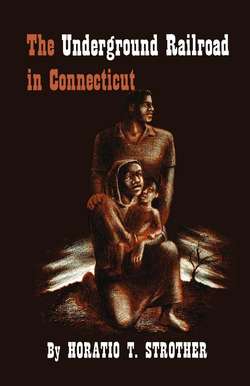Читать книгу The Underground Railroad in Connecticut - Horatio T. Strother - Страница 7
На сайте Литреса книга снята с продажи.
ОглавлениеPREFACE
IT HAS been said that we shall never know the events of the past as they actually occurred. And it is true that the historian, writing from a position more or less distant in time and viewpoint from the happenings that concern him, can hardly know his materials as his more or less distant forebears knew them. Nonetheless he must do his best, bearing in mind a maxim of Ralph Waldo Emerson: “Speak your latent conviction, and it shall be the universal sense.” Such is the task of the historian in resurrecting and presenting the missing links of the Underground Railroad.
Even at the height of its operations, the work of this “railroad” in Connecticut was shrouded in obscurity; and so it has remained. Detailed contemporary records have not survived; indeed they can hardly have existed, for the entire movement arose, flourished, and came to its end as an extralegal and even a downright illegal enterprise. A few of its passengers and operators wrote some of what they remembered, then or later, in the form of memoirs, diaries, or letters that are still in existence. Contemporary newspapers and periodicals supply some data, often less explicit than one could wish. Family and local legend, passed verbally down through the generations since the era before the Civil War, add a modicum of information and an understanding of contemporary viewpoints.
For leads of these sorts, for many facts and recollections, the writer is indebted to a great number of kind people, who labored conscientiously to help him gather information. It would be impossible to name them all here. But a special word of thanks must be tendered to Wilbur H. Siebert, of Ohio State University; the material he furnished has given this book its heart. To Cedric L. Robinson, Roderick B. Jones, Mrs. Mabel A. Newell, Mrs. Stowell Rounds, Beaufort R. L. Newsom, Mrs. Alfred H. Terry, Mrs. Charles Perkins, Mrs. Harold S. Burr, Mrs. Warren N. Drum, Miss Felicie Terry, Mrs. Lillian L. Clarke, Mrs. Alice Weaver, Henry Sill Baldwin, Benjamin L. Douglas, Mrs. Louise Kingsley, Miss Fedora Ferraresso, Mrs. Madeline Edgerton, and Miss Virginia Skinner, who helped the writer gather the fruits of research, goes his deepest gratitude.
He is indebted, too, to many hard workers at the Yale University Library, the Connecticut State Library, the Springfield City Library, and the Schomburg Library in New York City—and especially to Miss Gertrude M. McKenna of the Olin Library, Wesleyan University. Their generous cooperation has made his researches much easier and more profitable. The staff of Wesleyan University Press, by their encouragement and detailed cooperation, did much to bring this work to its final shape. The Connecticut Historical Society was a fruitful source of illustrations.
For their wise encouragement and valued suggestions, the writer is most thankful to Peter Schroeder and to Albert E. Van Dusen, of the University of Connecticut. And finally, to his wife Joanne, without whose constant support this work could not have been completed, goes his highest regard.
—HORATIO T. STROTHER
Higganum, ConnecticutJanuary 1962
